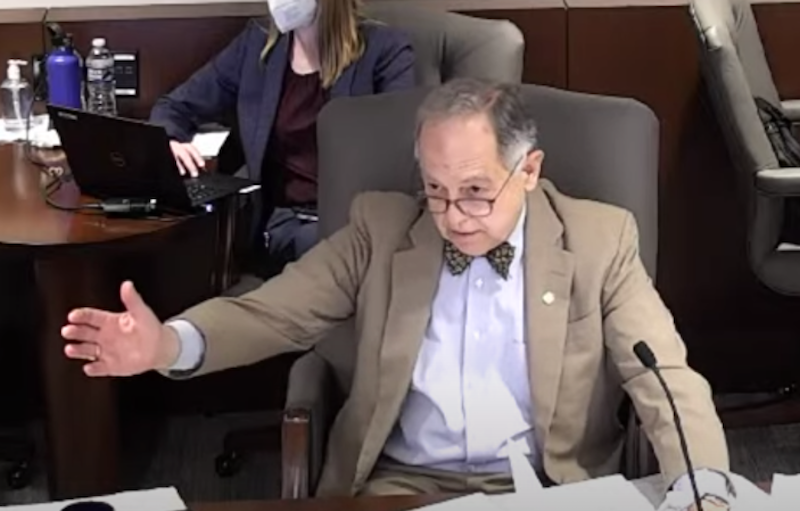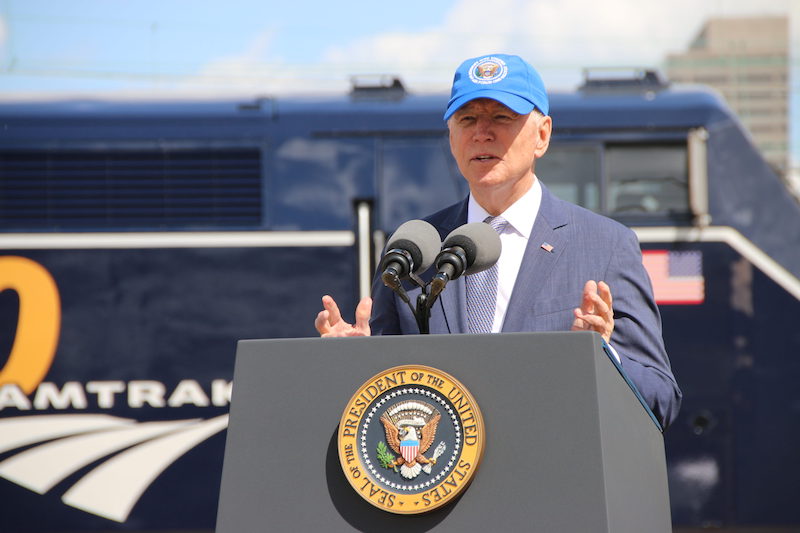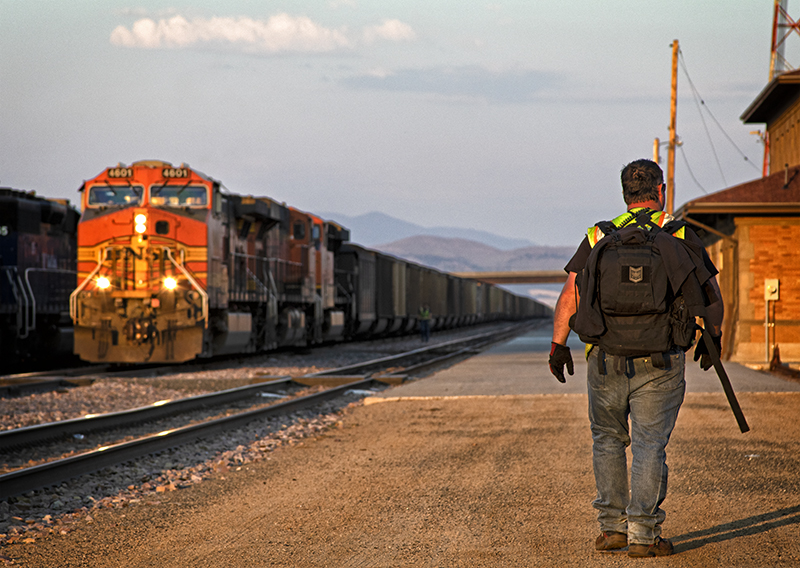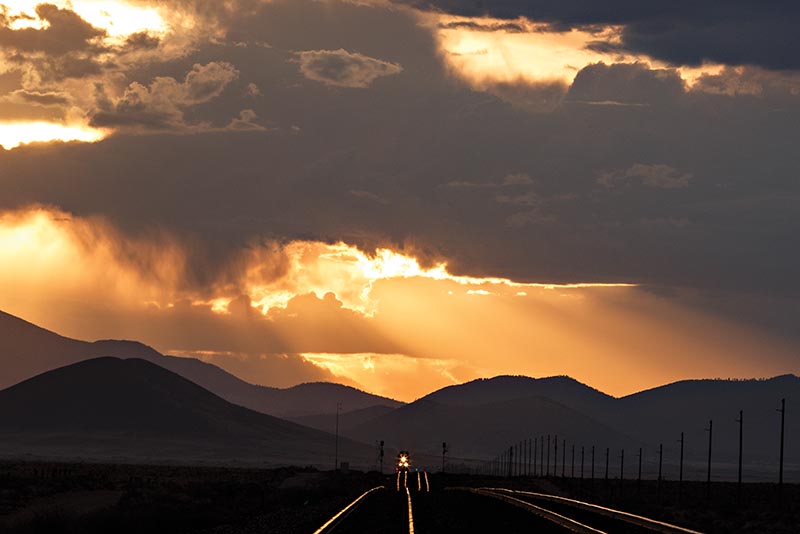By Justin Franz
This week, the editors of Railfan & Railroad Magazine are looking at some of the biggest stories in railroading in 2022. Be sure to check Railfan.com every weekday all year long for all your (free) railroad news and if you like what you see, consider subscribing.
There was plenty of good news in railroading in 2022, from brand-new passenger trains to the launch of a massive new railway preservation effort. But if there was one story that dominated the headlines this year — and not just in enthusiast and trade publications, but mainstream ones, too — it was the struggles of North America’s biggest Class I railroads.
From service issues to contentious labor talks, 2022 will go down as a year most Class I railroaders would like to forget.
The labor issues that would come to dominate headlines late in the year, began to emerge in February when a new attendance policy was put in place at BNSF Railway. The new “Hi-Viz” policy was similar to attendance policies at other Class Is, but it seemed to draw more ire than most and hundreds of railroaders quit because of it. The railroad later revised it, but it wouldn’t be the last time “Hi-Viz” was spoken of.

“The people paying more for bread, don’t care about TripOptimizer,” said STB Chairman Martin J. Oberman during an emergency hearing on Class I service issues.
“Absolute Gridlock”
As winter became spring, the number of complaints from railroad shippers about poor service from Class Is began to pile up, and soon the U.S. Surface Transportation Board began to demand answers. In April, the federal board held an “urgent” hearing with testimony from executives, shippers, union leaders and frontline railroaders. The executives that showed up blamed their company’s woes on the lingering impacts of the pandemic and a shrinking workforce due to the “Great Resignation.” But shippers and railroaders told a different story, one of Class I railroad executives beholden to the whims of shareholders who wanted deeper cuts and more profit that were bringing the national rail network to a crawl. If management thought they would get off easy, they learned quickly that the hearing was not going to be a walk in the park.
“We are in absolute gridlock,” said Matt Burkart, a yardmaster for BNSF Railway and a union official who attended the hearing in Washington D.C.
“This is not a pandemic-related issue. We’re dealing with years of cuts that have gutted the rail network that’s making these service issues inevitable,” said Chris John, President and CEO of the American Chemistry Council. “Precision Scheduled Railroading is just doing less with less.”
“The people paying more for bread, don’t care about TripOptimizer,” snapped STB Chairman Martin J. Oberman at one executive, in a memorable quote that would eventually end up on a t-shirt.
After the hearing, the STB announced it would require the four biggest U.S. roads — BNSF, Union Pacific, CSX Transportation and Norfolk Southern — to file monthly service recovery plans. But soon after those first reports were filed, the STB said the Class Is were again letting them down and that they needed more information about how they were increasing staffing and improving service. The Board also said it would consider measures to make it easier for rail customers to request emergency service.
Larry Gross, a rail analyst focused on intermodal, said the hearings would likely play a role in the decisions the STB makes in the coming weeks, months and years — and the industry might not like all of them.
“One thing seems clear for the immediate future: The era of an accommodating STB that will generally allow the railroads to proceed unfettered is over,” Gross said.

“This is a win for the economy and for the American people,” said President Joe Biden of a deal between railroads and labor. But railroaders were not happy with it.
Labor Talks Come to a Head
But the story that would put railroads on cable news and the front page of newspapers across America was a continuous round of contract talks that nearly led to the first nationwide rail strike in a generation.
In June, talks between a coalition of unions, represented by the Coordinated Bargaining Coalition, and six Class I railroads, represented by the National Carriers Conference Committee (which includes all five U.S. Class Is, plus Canadian National’s U.S. operations), had fallen apart. The National Mediation Board announced the two sides should go to arbitration. But that was rejected by the unions, who believed they could get a better deal if the dispute went to Congress and President Joe Biden. Over the next few weeks, union railroaders across the country began to vote in favor of a work stoppage, one that would have cost the U.S. economy $2 billion per day. Then, just days before a strike was set to start, Biden stepped in and created a presidential emergency board to study the conflict and delay a work stoppage.
A month later, that board came forward with recommendations, including raises for railroaders, but it passed the buck on more controversial issues like attendance policies and one-person crews. Labor officials said the recommendations “fell short,” but railroad executives said they were a “useful basis” to continue talks.
Those talks continued into September, but as the deadline for a deal approached it looked as if three of the largest unions — Brotherhood of Locomotive Engineers & Trainmen, SMART Transportation Division and Brotherhood of Railway Signalmen — were far from making a deal. With a strike deadline approaching, federal officials got involved and helped forge a deal that implemented much of what the emergency board originally recommended, plus some relief from attendance policies for time off related to healthcare.
“This is a win for the economy and for the American people,” President Biden wrote on Twitter. “Rail workers will get better pay, improved working conditions, and peace of mind around their health care costs. I thank both the unions and rail companies for negotiating in good faith.”

“It is clear to me that the national membership is dissatisfied with our leadership and the decisions made by them,” said Edward Hall, after beating long-time BLET National President Dennis R. Pierce.
That set off a new round of votes by union members, but as the fall went on, it became clear that many railroaders were unimpressed with the deal. One of their biggest complaints was that it did not include paid sick leave. As the holidays approached, it looked as if a national rail strike was finally about to happen.
But that threat did not last long. On November 28, President Biden announced he wanted Congress to resolve the issue. Within days, the House and Senate passed legislation to force the deal onto the unions, preventing a strike. Railroads hailed the deal as a win. But railroaders were left bitter about how it had all played out. In December, they let some of their frustration out on union leadership, when they ousted long-time Brotherhood of Locomotive Engineers & Trainmen National President Dennis R. Pierce. His opponent, Edward Hall, a Union Pacific locomotive engineer in Arizona, had been critical of how Pierce had handled the national talks.
“It is clear to me that the national membership is dissatisfied with our leadership and the decisions made by them,” Hall said.



